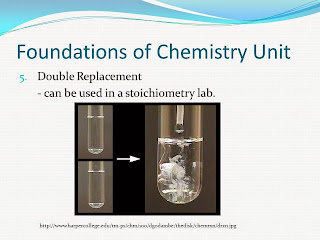In the heat unit I do several labs and activities:
1) Melting Ice Lab
- record temperature every two minutes as ice melts, the water heats up and the boiling point is reached
- using a Bunsen burner or a hot plate
- great for reviewing principles of graphing
- developing the idea of a warming curve for water
2) Cooling Water Lab
- record temperature every two minutes as 100 mL of water and 400 mL of water in beakers sit in an ice bath
- great for reviewing principles of graphing
- developing the idea of a warming curve for water
3) Specific Heat Capacity of Metals Lab
- to determine the specific heat capacity of iron, brass and aluminum metals by calorimetry

4) Expansion and Conduction lab activities
- using a kit from supply companies
- a set of three expansion activities and three conduction activities set up as six stations around the room
- includes a ball and ring apparatus, bi-metal strip, Leslie's cube, pyrometer, conductometer and metal conducting strips
5) Enthalpy of Solution for Ionic Solids Lab
- determine the heat involved in forming a solution of a small sample of four different solids
- using calorimeters
- two solids are exothermic when they dissolve, while two solids are endothermic as they dissolve












